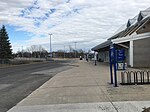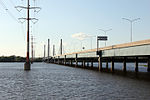Terrebonne, Quebec
1647 establishments in the French colonial empireCities and towns in QuebecPages with French IPAPages with non-numeric formatnum argumentsTerrebonne, Quebec ... and 1 more
Use Canadian English from January 2023

Terrebonne (French pronunciation: [tɛʁbɔn]) is an off-island suburb of Montreal, in southwestern Quebec, Canada. It is located in the North Shore region of the Montreal area, north of Laval across the Rivière des Mille-Îles. This city is divided in three sectors, namely Lachenaie, La Plaine and Terrebonne. In the past, these sectors were distinct cities, but, on 22 August 2001, they merged under the name of Terrebonne. According to the 2021 Canadian Census Terrebonne has a population of 119,944, making it Montreal's third largest suburb and the largest city on the North Shore.
Excerpt from the Wikipedia article Terrebonne, Quebec (License: CC BY-SA 3.0, Authors, Images).Terrebonne, Quebec
Montée Masson,
Geographical coordinates (GPS) Address Nearby Places Show on map
Geographical coordinates (GPS)
| Latitude | Longitude |
|---|---|
| N 45.7 ° | E -73.633333333333 ° |
Address
Montée Masson
Montée Masson
J6W 1C7
Quebec, Canada
Open on Google Maps






